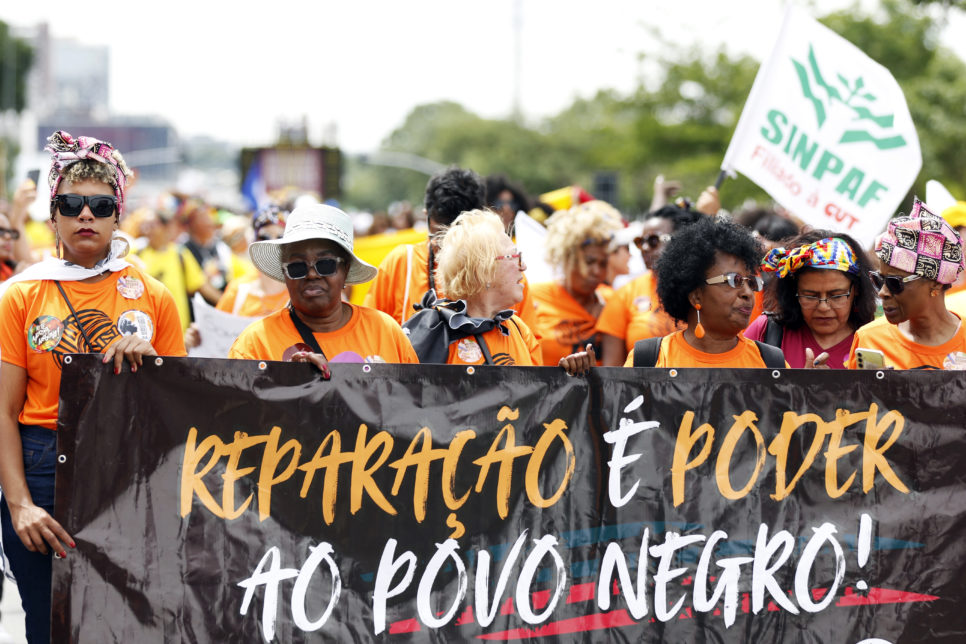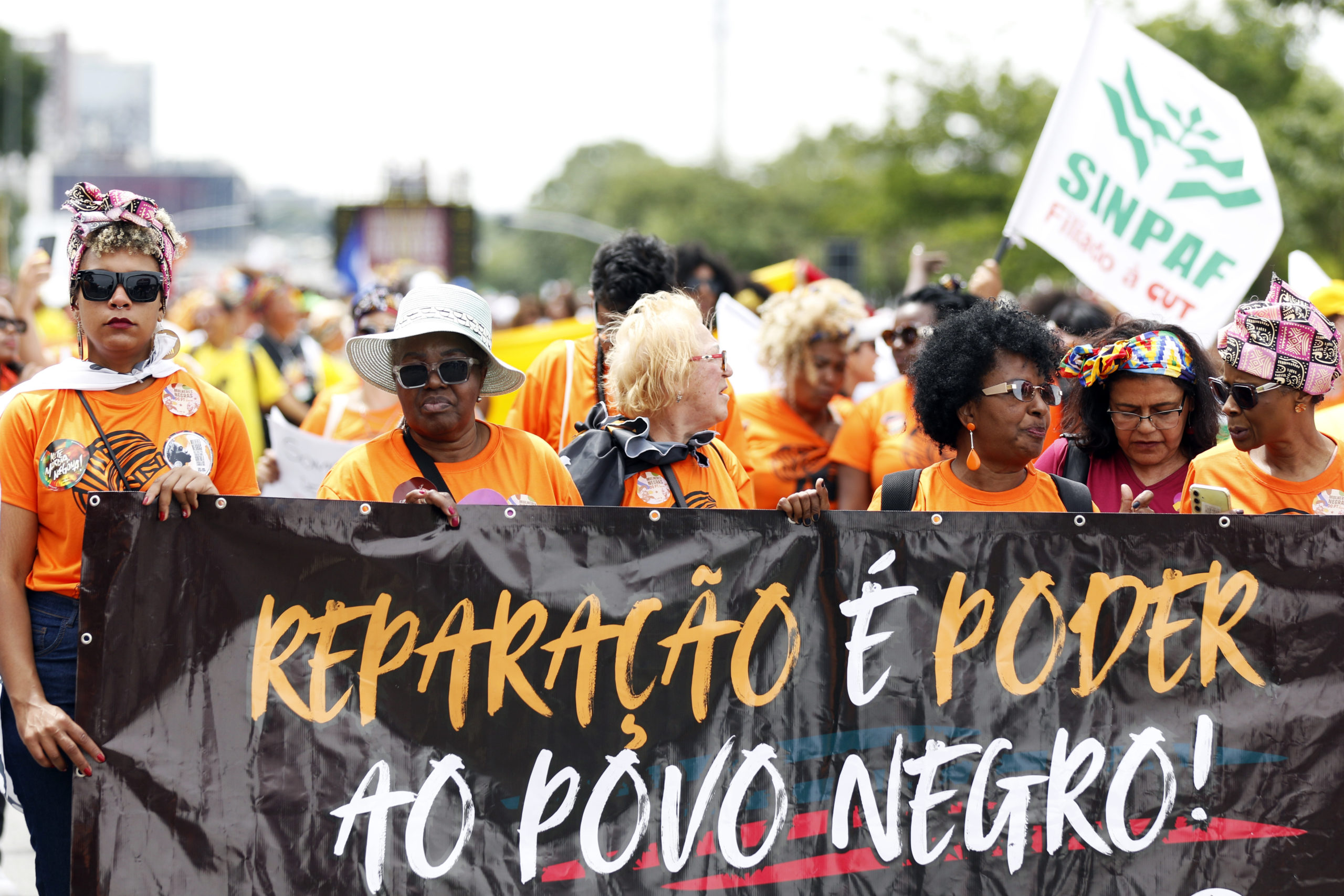33 years since the Carandiru Massacre: memory and challenges in Brazil’s penal system
Three decades after the massacre in which 111 people were killed, the Brazilian prison system is still characterized by overcrowding, torture, and impunity
 Antigo Complexo do Carandiru. onde 111 presos foram assassinados em 1992 no pavilhão nove em decorrência de ação policial
Antigo Complexo do Carandiru. onde 111 presos foram assassinados em 1992 no pavilhão nove em decorrência de ação policial
The Carandiru Massacre, which left at least 111 people dead on October 2, 1992, is still the biggest symbol of prison violence in Brazil. Three decades on, there has not been full accountability for the incident and it exposes the ongoing situation of a prison system characterized by overcrowding, rights violations, and a lack of structural policies.
At the end of 2024, 909,000 people were registered as deprived of liberty in Brazil, according to data from the Information System of the National Penitentiary Department. Of this total, 783,741 were being held either in physical cells or under unmonitored house arrest, 122,102 were being monitored electronically, and at least 3,751 remained in police custody. Although not exact, these figures exposed mass incarceration and reinforced the fact that the structural violence that marked Carandiru is ongoing.
Criminal accountability
The court proceedings related to the massacre have dragged on for decades. In 2001, Colonel Ubiratan Guimarães, who commanded the operation, was sentenced to 632 years in prison but was acquitted in 2006 by the São Paulo Court of Justice on the grounds of “strict compliance with legal duty.” Between 2013 and 2014, 74 military police officers were sentenced to prison terms ranging from 48 to 632 years. Years later, in 2022, the then-president Jair Bolsonaro granted a pardon to those convicted—a decision deemed constitutional in 2024 but which is still being challenged by the Public Prosecutor’s Office for violating international human rights treaties.
Read more
Ongoing violations
The Carandiru Massacre has become a symbol of the systematic use of state force and the lack of accountability. Recent reports confirmed that the situation has not changed. In 2023, inspections by the National Mechanism for the Prevention and Combat of Torture (MNPCT) reported physical and psychological torture in São Paulo prisons, as well as the abusive use of non-lethal weapons and prolonged confinement.
The Federal Court ordered the São Paulo government to implement both the Committee and the State Mechanism for the Prevention and Combat of Torture, and also the development of an action plan. At the national level, data from the National Council of Justice (CNJ) revealed around 153,000 reports of torture in the Brazilian prison system in 2024.
Plano Pena Justa
Given this situation, in 2023 the Supreme Federal Court declared a “State of Unconstitutionality” in the prison system (ADPF 347). This ruling in a case that had been pending for eight years, gave rise to the National Plan to Confront the State of Unconstitutionality in Brazilian Prisons, known as the Plano Pena Justa (Fair Sentencing Plan). The initiative, which is coordinated by the National Secretariat for Penal Policies (SENAPPEN) and by the CNJ, recognizes institutional racism as a structural pillar of mass incarceration and seeks to mitigate its effects through measures to improve the penal cycle, from the time of incarceration up to release proceedings.
The STF ruling also mandated the creation of state-level plans, to be developed with the broad and effective participation of civil society. However, many states excluded organizations, social movements and the families of people deprived of liberty, which led to strategies that fall short of addressing the complex problems discussed above, such as the lack and poor quality of prison services, torture and other cruel, inhuman, and degrading treatment, and inadequate public reparation measures, among others.
Memory and resistance
Civil society keeps the memory of the incident alive through initiatives such as the Memórias Carandiru Center, run by educators and prison survivors. The collective organizes tours in the Parque da Juventude – the former site of the Casa de Detenção–and aims to retell the story of the massacre from the perspective of those who survived both it and the prison system.
A public letter signed by civil society organizations, legal clinics, and public defenders reinforced this commitment and the need to keep Espaço Memórias Carandiru open. This project was discontinued at the start of Tarcísio’s administration. The document recalls that the Inter-American Commission on Human Rights (IACHR), in its Merits Report nº 34/00, recognized Brazil’s international responsibility for the executions and injuries of 1992, as well as for the violation of judicial guarantees due to the lack of effective investigation and punishment. The IACHR recommended that the Brazilian State provide reparation for the victims, adopt social reintegration policies, and further support memory initiatives.
Despite these mandates, the letter states that no effective reparation policy has been implemented. Compensation has been partial, and memory projects remain scarce. Support for the Espaço Memórias Carandiru is presented as a key measure for collective reparation, the destigmatization of the survivors, and addressing state violence. Among the recommendations are guaranteed ongoing funding for the center–which has been closed since 2023–the hiring of educators who are prison survivors, a review of the exhibition chronology to include the serious violations of 1992, and the creation of a digital museum.
A lasting legacy
The Carandiru Massacre remains a landmark of Brazil’s failure to address mass human rights violations and to build an effective justice system. In order to move forward, experts and organizations emphasize the need for a collective commitment to human rights, public policies on memory, reparations for surviving victims and for the families of those harmed by state action and inaction in this case and in all the other massacres that have taken place in the prison system since, as well as guarantees to prevent the recurrence of violations.






